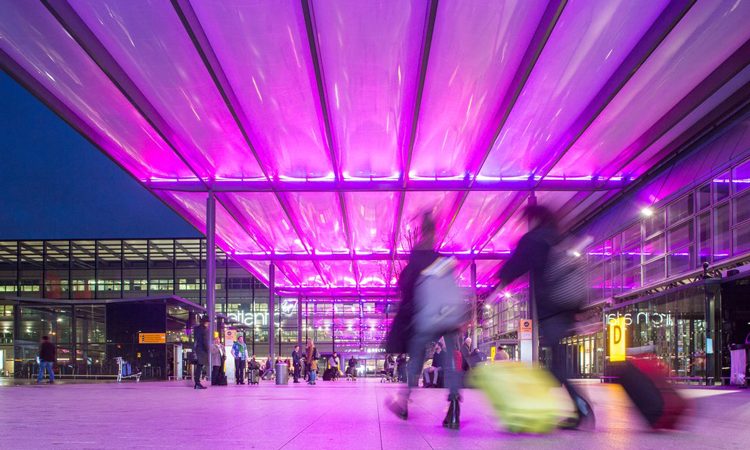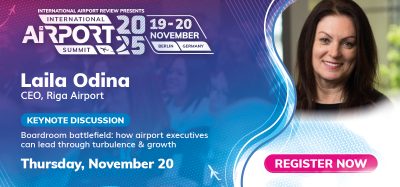Attracting early and diverse talent into aviation
Posted: 24 August 2022 | Anita Chagar | No comments yet
Anita Chagar, Diversity Network Lead at Heathrow Airport, discusses the potential of the aviation industry to champion diverse talent within the workforce, reflecting the role of airports worldwide in enabling diversity across borders.


Credit: London Heathrow (LHR)
Across the aviation industry mass recruitment drives are taking place within airports, expanding the workforce to meet the passenger demands that are returning at great pace since the COVID-19 pandemic. Aviation, and airports, have always had an enduring quality of fascination and wonder that has attracted individuals to join its industry through one of the myriad roles found within its ecosystem. Managing an operation with high sensitivities; supporting the movement of great volumes of passengers, baggage, and cargo; working alongside the aircraft as it lands and takes off from the runway; feeling connected on a global scale – the list of compelling opportunities at an airport is endless.
However, since 2020, the pandemic has exposed aviation in all its colours – its strengths, its weaknesses, its influences, its dependencies, its challenges and its potential. For the young professionals – or early talent – just starting out in their careers, having completed their education under the pressures of the pandemic, does the aviation industry still hold the attraction that it once had? Is it seen as a viable option to pursue a career in, perhaps even a long-lasting one? And with the increasing prevalence of the awareness and expectation of institutionalised diversity and equality, does the industry in its current form fulfil the inclusivity criteria early talent are starting to judge their prospective employers on?
Since 2020, the pandemic has exposed aviation in all its colours – its strengths, its weaknesses, its influences, its dependencies, its challenges and its potential”
Having joined Heathrow Airport on their Graduate Scheme, the Future Leaders Programme, at the end of 2019, and in my current tenure as Lead of Heathrow’s Diversity Network for Culture and Ethnicity, known as en-haNCE, I have some thoughts and reflections to share for airports seeking to attract early and diverse talent to their workforce.
Join us live: Shaping the Next Generation of Hold Baggage and Air Cargo Screening
Join us live for an insightful webinar on 11th December at 14:00 GMT, in collaboration with Smiths Detection, as we explore the strategic balance of operational efficiency, regulatory compliance, and sustainability in high-volume security environments.
This session offers a focused look into future-proofing your security strategy.
Key learning points
- Cost Reduction: Strategies to minimize bag travel time while simultaneously reducing operational costs.
- Regulatory Roadmap: Insights into the next wave of regulatory changes and their impact on future investment decisions.
- Sustainable Systems: Practical approaches to building sustainability into security systems and lowering the total cost of ownership (TCO).
- Scalable Solutions: Real-world examples of scalable systems supporting current airport growth and preparing for tomorrow.
Register now for expert insights, case studies, and actionable strategies on operational efficiency!
Airports are like cities
If you were to describe what you would find within the estate of Heathrow, you would also be describing what you would typically find in any given metropolitan city: planes, trains, roads, hotels, restaurants, shops, businesses – and lots of people. This melting pot of activity means there’s nearly always a project, programme or working opportunity that matches the varied interests of an early talent cohort, many of whom will be looking to transform their initial interest in aviation into careers of conviction, but just need a deeper insight into the industry to do so.
One analogy for the airport which became apparent to me within my first year of working at Heathrow, as I took part in the popular lockdown activity of completing jigsaw puzzles, is that an airport is exactly that: a giant puzzle made up of lots of small pieces, each team and department representing another piece of the airport puzzle, and my time on the graduate scheme, which was set up as a rotational programme, was the start of my journey to work out which piece fit where.
Offering a scheme or programme that is rotational in nature sets up an airport experience like no other. The flexibility to move across teams within the airport – from security to retail to airside operations to communications and beyond – builds transferrable skills that can be applied in numerous contexts, develops a holistic view of the airport which is valuable when decision-making, and creates a cross-functional network that can be utilised with great impact. These are aspects of an early careers programme which is exciting, dynamic, rewarding, and beneficial to the business. If we’re seeking airport efficiencies through our recovery from the pandemic, let’s encourage multi-purpose working habits right from the start for our early talent employees.
Airports are facilitators of diversity
Through the terminals and via the runways, millions of passengers from all walks of life converge within an airport for a moment in time before continuing onto their next destination. These passengers present a cross-section of global society, made up of different cultures, ethnicities, genders, sexualities, abilities, ages and more. Airports, therefore, as a perhaps unintended but welcome consequence of helping to move mass numbers of people around the world, play a significant role in enabling diversity across borders. Based on this perception of airports, an individual interested in working in the aviation industry may come to the next logical question: is it inclusive and will I feel like I belong?
A starting point for inclusivity within airports is the establishment of staff diversity networks. These are the internal communities within the workforce that bring together colleagues from different parts of the business to unite around a single or multiple commonalities they wish to share and celebrate together and educate colleagues on. They could range from cultural events such as Diwali, Eid and Christmas, or awareness campaigns such as Black History Month, Pride Month, International Women’s Day, as well as discussions spotlighting topics such as hidden disabilities, menopause and microaggressions. Having dedicated safe spaces for the workforce to share who they are, beyond the remit of their work, contributes immensely to the sense of inclusivity and belonging that will attract individuals from diverse backgrounds who may feel they are currently underrepresented in aviation’s workforce.
Concluding thoughts
Attracting early and diverse talent to the airport requires us understanding what their expectations of a working environment are. It requires looking beyond the immediate impressions of an airport that may typically attract an individual to working there – such as the aircraft, international travel, and big brands – and finding out the specific motivations and personal criteria that individuals may be determining their employer selection against. As time continues, values and expectations of generations shift, and the industry must keep sight of this to ensure its longevity.
Attracting early and diverse talent to the airport requires us understanding what their expectations of a working environment are”
Airports are a dynamic environment, where you must learn fast and act quickly, relying on transferrable skills to apply knowledge in the moment. There are individuals who are eager to learn and willing to take up opportunities to expand their skillset and expertise within aviation, but may be deterred from applying if they can’t see, and don’t feel like, they belong there. This is why I am delighted to share that Heathrow Airport has recently been shortlisted for the Diverse Company Award at the National Diversity Awards 2022. Such recognition from peers inside and outside of the industry greatly contributes to showcasing Heathrow as an inclusive company for its employees. Airports must demonstrate that, even though they are operating on a global stage, they are mindful of the local contexts of the individuals who make up their workforce too.
Biography


Stay Connected with International Airport Review — Subscribe for Free!
Get exclusive access to the latest airport and aviation industry insights from International Airport Review — tailored to your interests.
✅ Expert-Led Webinars – Gain insights from global aviation leaders
✅ Weekly News & Reports – Airport innovation, thought leadership, and industry trends
✅ Exclusive Industry Insights – Discover cutting-edge technologies shaping the future of air travel
✅ International Airport Summit – Join our flagship event to network with industry leaders and explore the latest advancements
Choose the updates that matter most to you.
Sign up now to stay informed, inspired, and connected — all for free!
Thank you for being part of our aviation community. Let’s keep shaping the future of airports together!
Related topics
Airside operations, COVID-19, Equity, Diversity & Inclusion (EDI), Passenger experience and seamless travel, Security, Terminal operations, Workforce


















